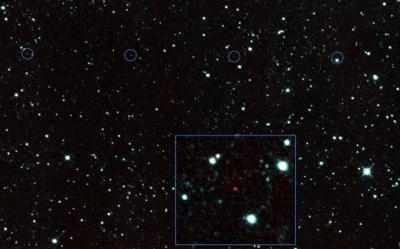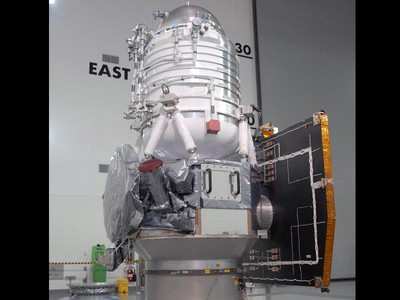WISE Observatory Had Been Shut Down In 2011 Following Completion Of Primary Mission
NASA's Near-Earth Object Wide-field Infrared Survey Explorer (NEOWISE) spacecraft has spotted a never-before-seen asteroid -- its first such discovery since coming out of hibernation last year.

NEOWISE originally was called the Wide-field Infrared Survey Explorer (WISE), which had made the most comprehensive survey to date of asteroids and comets. The spacecraft was shut down in 2011 after its primary mission was completed. But in September 2013, it was reactivated, renamed and given a new mission, which is to assist NASA's efforts to identify the population of potentially hazardous near-Earth objects (NEOs). NEOWISE also can assist in characterizing previously detected asteroids that could be considered potential targets for future exploration missions.
NEOWISE's first discovery of its renewed mission came on Dec. 29 -- a near-Earth asteroid designated 2013 YP139. The mission's sophisticated software picked out the moving object against a background of stationary stars. As NEOWISE circled Earth scanning the sky, it observed the asteroid several times over half a day before the object moved beyond its view. Researchers at the University of Arizona used the Spacewatch telescope at the Kitt Peak National Observatory southwest of Tucson to confirm the discovery. Peter Birtwhistle, an amateur astronomer at the Great Shefford Observatory in West Berkshire, England, also contributed follow-up observations. NASA expects 2013 YP139 will be the first of hundreds of asteroid discoveries for NEOWISE.
"We are delighted to get back to finding and characterizing asteroids and comets, especially those that come into Earth's neighborhood," said Amy Mainzer, the mission's principal investigator from NASA's Jet Propulsion Laboratory (JPL) in Pasadena, CA. "With our infrared sensors that detect heat, we can learn about their sizes and reflectiveness."
2013 YP139 is about 27 million miles from Earth. Based on its infrared brightness, scientists estimate it to be roughly 0.4 miles in diameter and extremely dark, like a piece of coal. The asteroid circles the sun in an elliptical orbit tilted to the plane of our solar system and is classified as potentially hazardous. It is possible for its orbit to bring it as close as 300,000 miles from Earth, a little more than the distance to the moon. However, it will not come that close within the next century.
WISE discovered more than 34,000 asteroids and characterized 158,000 throughout the solar system during its prime mission in 2010 and early 2011. Its reactivation in September followed 31 months in hibernation.

NEOWISE will continue to detect asteroids and comets. The observations will be automatically sent to the clearinghouse for solar system bodies, the Minor Planet Center in Cambridge, MA, for comparison against the known catalog of solar system objects and to determine orbit if the object is not known. A community of professional and amateur astronomers will provide follow-up observations, establishing firm orbits for the previously unseen objects.
Infrared sensors, similar to the cameras on NEOWISE, are a powerful tool for discovering, cataloging and understanding the asteroid population. Some of the objects about which NEOWISE will be collecting data could become candidates for NASA's announced asteroid initiative, which will be the first mission to identify, capture and relocate an asteroid for astronauts to explore. The initiative represents an unprecedented technological feat that will lead to new scientific discoveries and technological capabilities that will help protect our home planet and achieve the goal of sending humans to an asteroid by 2025.
(Images provided by NASA)
 ANN's Daily Aero-Term (04.30.24): Runway Centerline Lighting
ANN's Daily Aero-Term (04.30.24): Runway Centerline Lighting ANN's Daily Aero-Linx (04.30.24)
ANN's Daily Aero-Linx (04.30.24) Airborne 04.24.24: INTEGRAL E, Elixir USA, M700 RVSM
Airborne 04.24.24: INTEGRAL E, Elixir USA, M700 RVSM Airborne 04.29.24: EAA B-25 Rides, Textron 2024, G700 Deliveries
Airborne 04.29.24: EAA B-25 Rides, Textron 2024, G700 Deliveries Airborne-NextGen 04.23.24: UAVOS UVH 170, magni650 Engine, World eVTOL Directory
Airborne-NextGen 04.23.24: UAVOS UVH 170, magni650 Engine, World eVTOL Directory




